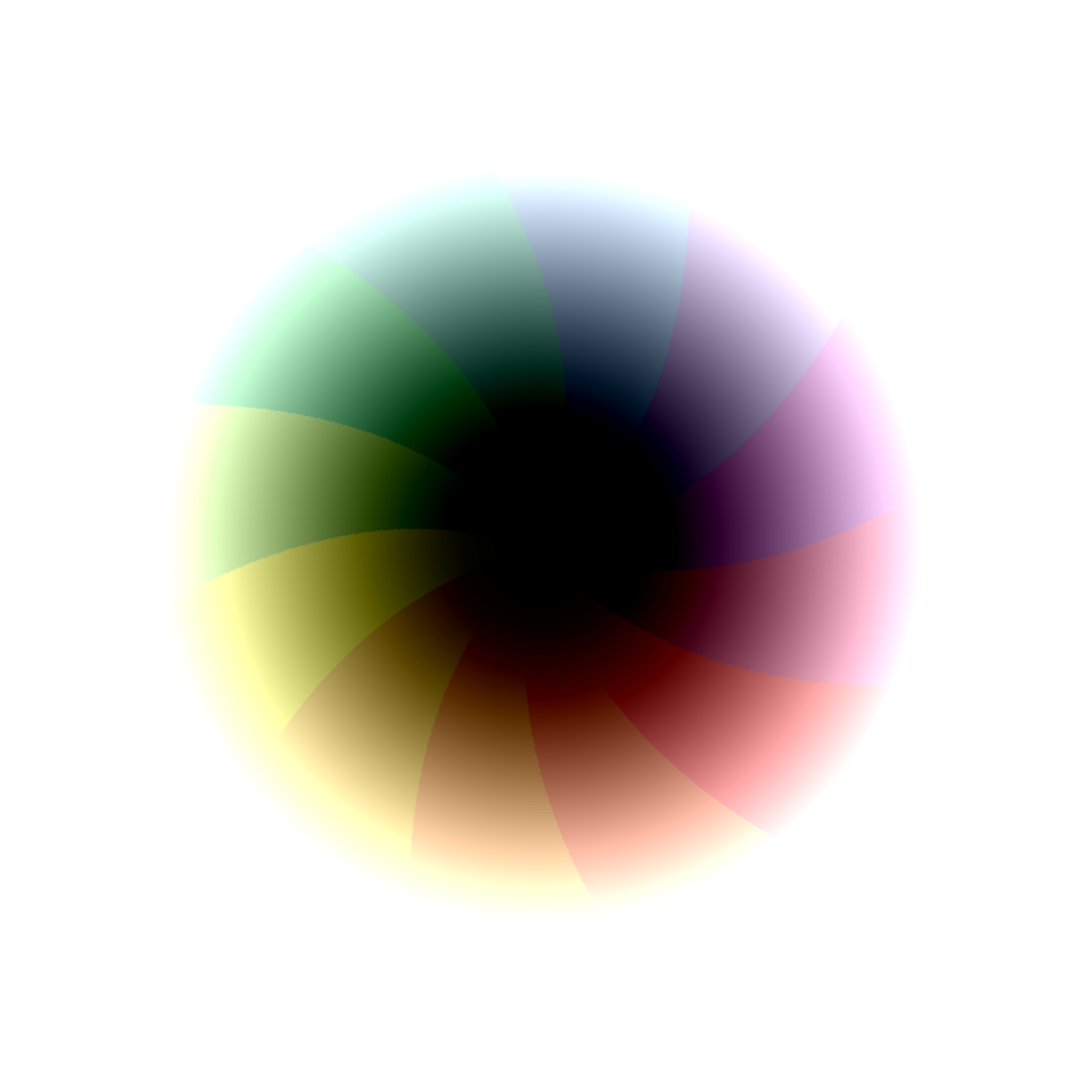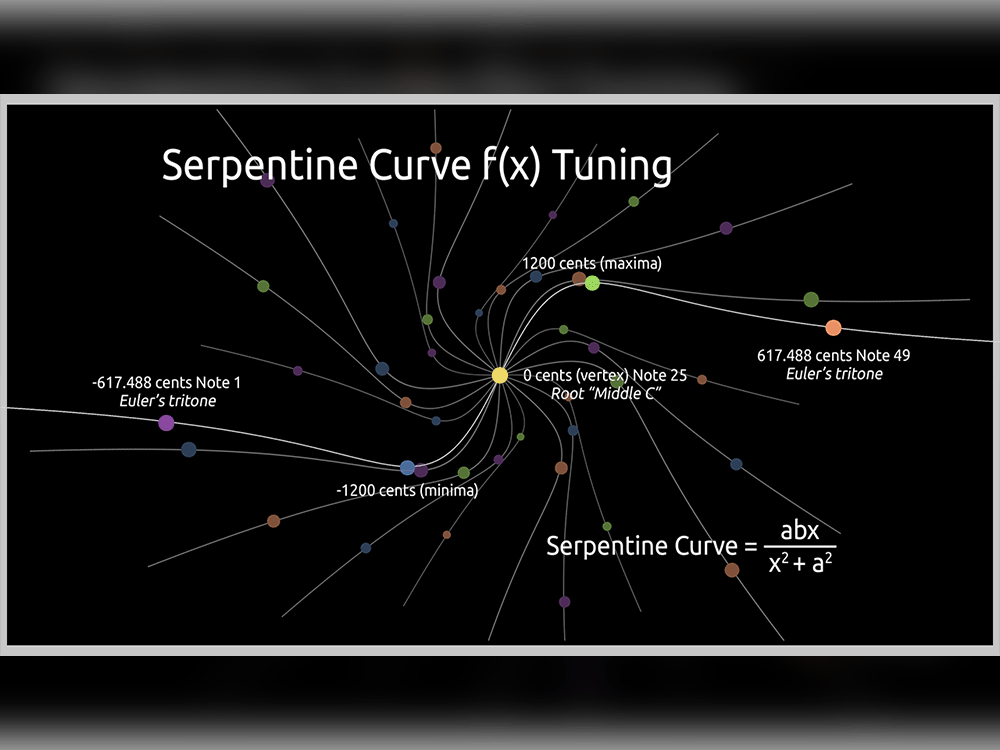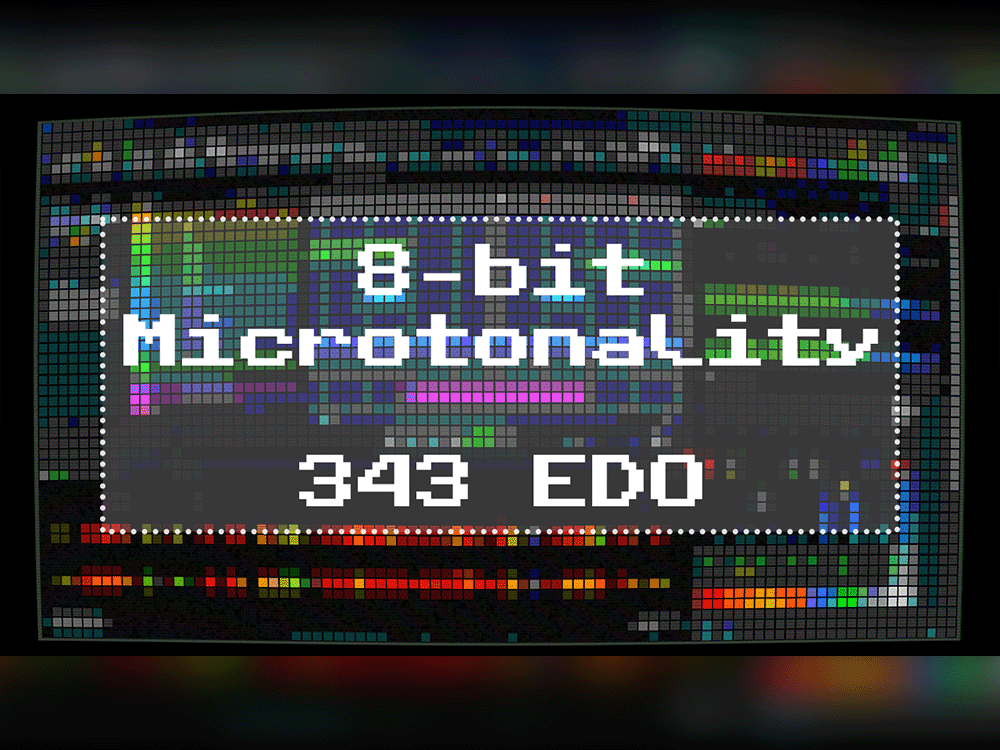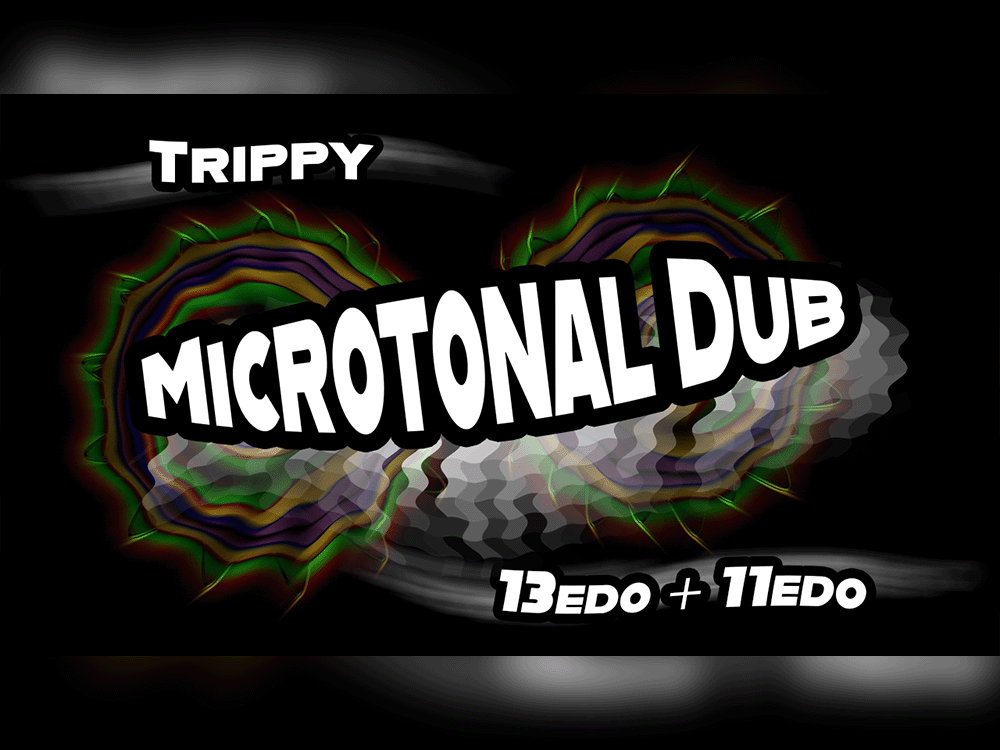An experiment with a distorted synthesizer tuned to the Serpentine Curve function. It could be considered an irregular or unconventional temperament because it contains microtones and macrotones. This improvisation features a two-octave range spanning 49 keys on the keyboard with the notes rising or falling as it follows the Serpentine Curve.
With Middle C placed at the vertex of the curve, the notes to the right first rise an octave (~note 32) and then begin to fall, maxing out at a greater septimal tritone (Euler’s tritone) on note 49. The same pattern follows to the left of Middle C, but with the curve going down an octave.
Below are the cents values for the 49 notes
Note 1: -617.488 cents Greater Septimal Tritone Down (Euler’s tritone)
Note 2: -640.28 cents
Note 3: -664.618 cents
Note 4: -690.631 cents
Note 5: -718.453 cents
Note 6: -748.222 cents
Note 7: -780.072 cents
Note 8: -814.121 cents
Note 9: -850.459 cents
Note 10: -889.118 cents
Note 11: -930.03 cents
Note 12: -972.964 cents
Note 13: -1017.42 cents
Note 14: -1062.477 cents
Note 15: -1106.545 cents
Note 16: -1147.016 cents
Note 17: -1179.752 cents
Note 18: -1198.412 cents Octave Down
Note 19: -1193.702 cents
Note 20: -1152.863 cents
Note 21: -1060.16 cents
Note 22: -899.729 cents
Note 23: -662.033 cents
Note 24: -352.983 cents
Note 25: 0 cents Root [Middle C @ 261.626 Hz]
Note 26: 352.983 cents
Note 27: 662.033 cents
Note 28: 899.729 cents
Note 29: 1060.16 cents
Note 30: 1152.863 cents
Note 31: 1193.702 cents
Note 32: 1198.412 cents Octave Up
Note 33: 1179.752 cents
Note 34: 1147.016 cents
Note 35: 1106.545 cents
Note 36: 1062.477 cents
Note 37: 1017.42 cents
Note 38: 972.964 cents
Note 39: 930.03 cents
Note 40: 889.118 cents
Note 41: 850.459 cents
Note 42: 814.121 cents
Note 43: 780.072 cents
Note 44: 748.222 cents
Note 45: 718.453 cents
Note 46: 690.631 cents
Note 47: 664.618 cents
Note 48: 640.28 cents
Note 49: 617.488 cents Greater Septimal Tritone Up (Euler’s tritone)
The scale created by Ambient Esoterica can be downloaded here at Scala Workshop:
https://sevish.com/scaleworkshop/?n=Serpentine_CenterNote60is261Hz&l=-h5.2wjy2_-hs.1o3hl_-ig.3okc5_-j6.dj0t_-jy.2p6et_-ks.1bodt_-lo.0fefx_-mm.pysd_-nm.2qfgo_-op.p9th_-pu.06fjx_-r0.5qjzj_-s9.90br_-ti.a7ss_-uq.161y_-vv.0cp9_-wr.g4c0_-xa.8tsf_-x5.f216_-w0.ihw6_-tg.3fe9_-oz.4c5x1_-ie.071c3_-9s.5usig_._9s.5usig_ie.071c3_oz.4c5x1_tg.3fe9_w0.ihw6_x5.f216_xa.8tsf_wr.g4c0_vv.0cp9_uq.161y_ti.a7ss_s9.90br_r0.5qjzj_pu.06fjx_op.p9th_nm.2qfgo_mm.pysd_lo.0fefx_ks.1bodt_jy.2p6et_j6.dj0t_ig.3okc5_hs.1o3hl_h5.2wjy2&f=79.miqdhkcvh&m=z&version=2.5.7#
The Math behind the Serpentine Curve:
https://en.wikipedia.org/wiki/Serpentine_curve
“Serpentine curves were studied by L’Hôpital and Huygens, and named and classified by Newton.” – from the Wikipedia article linked above.
The music was produced in Cubase with a custom tuning script imported into Native Instrument’s Retro Machines Mk2 VST (Pro One).





